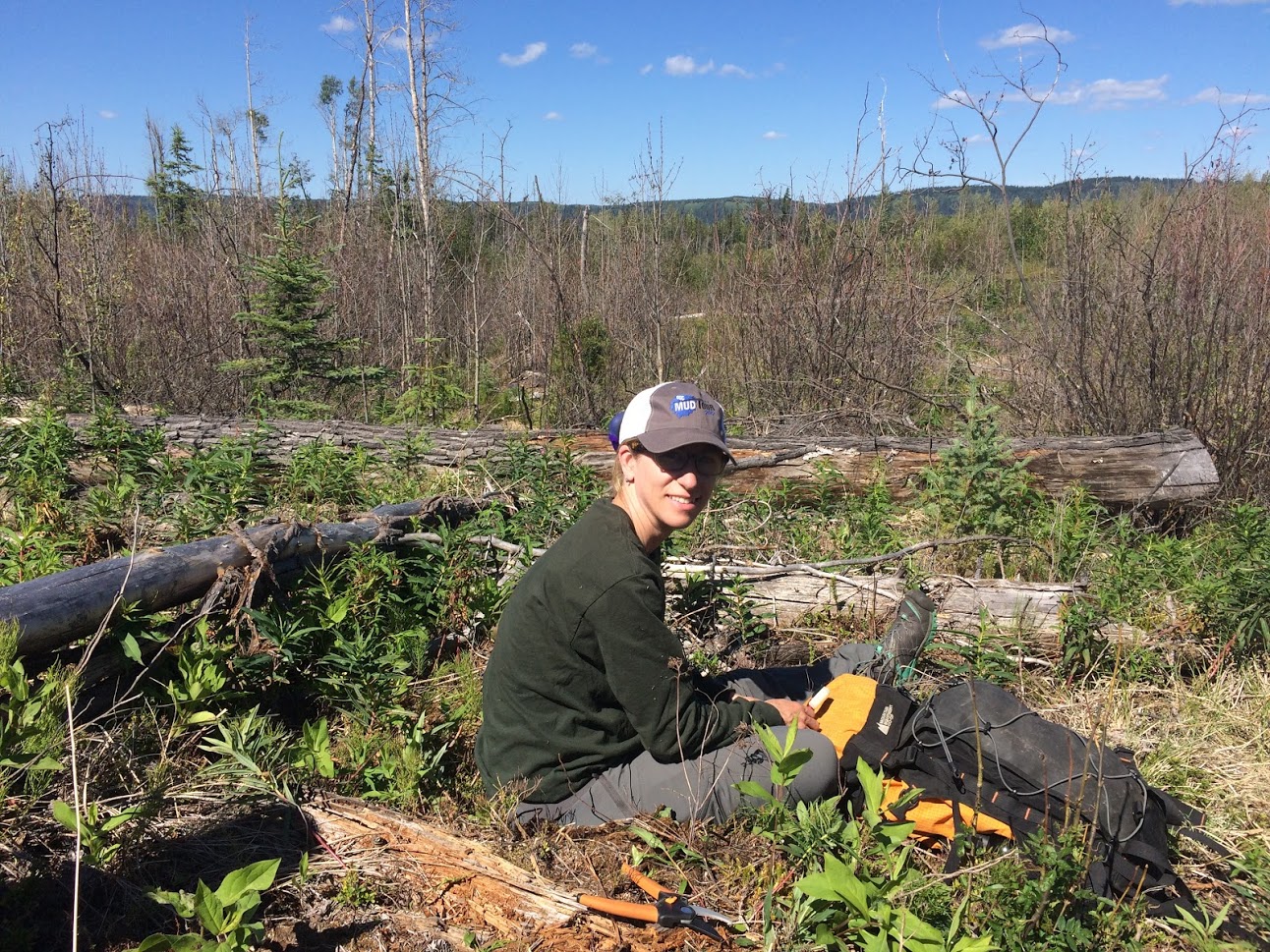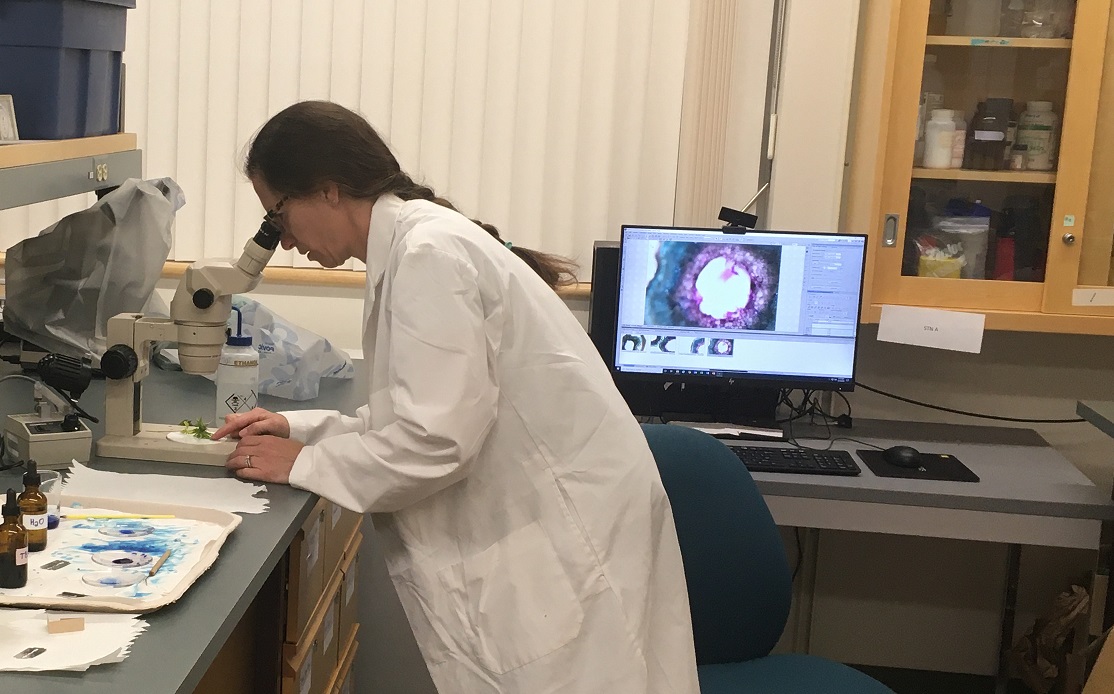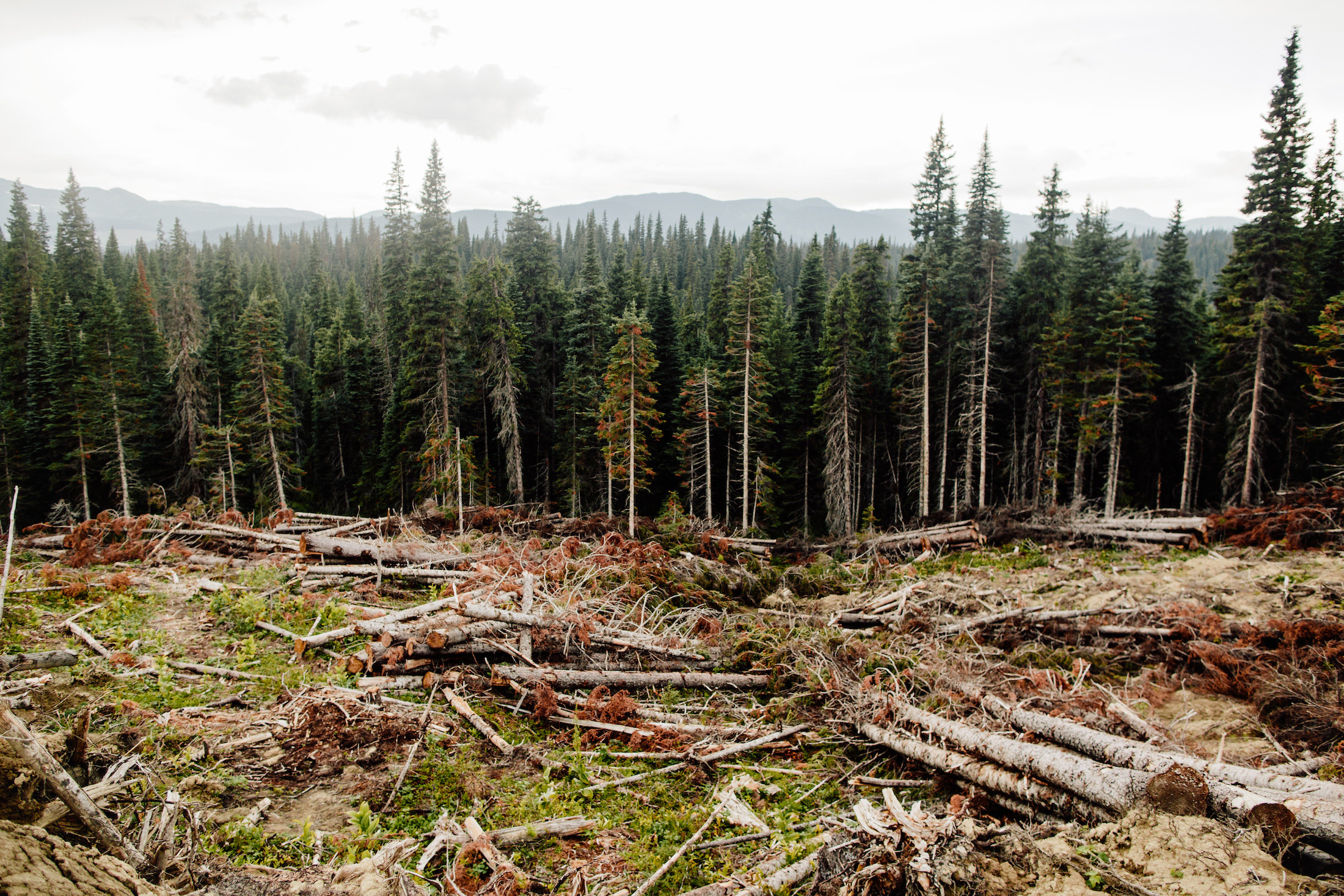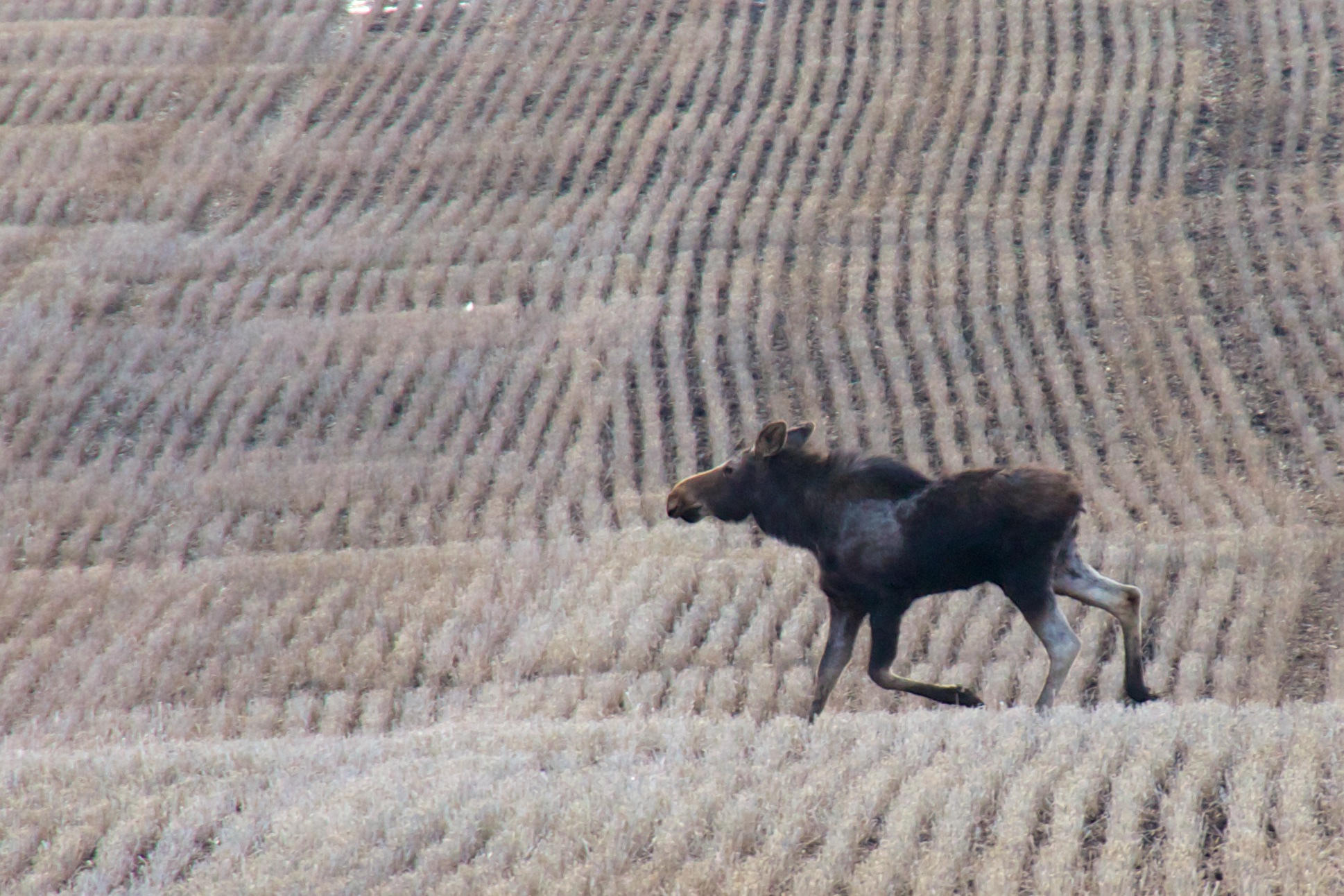
Water is precious — and precarious — on First Nations reserves like this one
Boil-water advisories in Moose Factory, Ont., are frequent, expensive and ongoing — but not ‘long-term’...
Picture a helicopter flying over a cutblock, releasing a misty cloud from a sprinkler-like contraption rigged to its belly. The cloud contains a herbicide called glyphosate.
Every year, B.C. sprays about 10,000 hectares of forests with glyphosate as part of its reforestation program. The practice, which is also common in other parts of the country, gives replanted conifers a better chance to grow by killing competing plants like aspen and birch.
Glyphosate, best known as the active ingredient in weed killer Roundup, is approved by Health Canada for use in agriculture and forestry. Several organizations and researchers have raised concerns about glyphosate’s potential effects on human health, linking it to cancer, infertility, liver disease and other ailments. Thousands of people have filed lawsuits against Bayer (formerly Monsanto), the company that makes Roundup, claiming it caused them to develop non-Hodgkin’s lymphoma. Studies have also shown glyphosate has toxic effects on earthworms, insects, amphibians and other aquatic species.
In a 2019 statement addressing concerns with glyphosate, Health Canada said “no pesticide regulatory authority in the world currently considers glyphosate to be a cancer risk to humans at the levels at which humans are currently exposed,” though it did not mention concerns about other health issues or other species.
Critics, like the BC Wildlife Federation, say spraying glyphosate on forests does more harm than good. Removing competing plants can make forests more susceptible to wildfire, and the herbicide also kills other vegetation that animals like moose rely on as a food source. The province has been conducting studies on the impacts of glyphosate on moose populations for the past two years and expects to have results this fall.
Little is known about glyphosate’s long-term effects on plants and the wider forest ecosystem. Lisa Wood, a plant biologist and assistant professor at the University of Northern British Columbia, recently received funding from the Natural Sciences and Engineering Research Council of Canada to continue her work researching the effects of glyphosate on forest ecosystems, particularly forests in northwest B.C. As a scientist, Wood is trying to deepen the understanding of the effects of glyphosate to inform future decisions.
The Narwhal asked Wood some questions about glyphosate and her ongoing research.
Glyphosate is the active ingredient in a number of different herbicides. It’s in formulations such as Roundup.
It is used to get rid of any unwanted plant. It basically interrupts a metabolic pathway within a plant and prevents the production of certain amino acids and other things that the plant needs to survive. By cutting off that pathway, it kills the plant.
It’s used in agriculture to get rid of weeds. It’s used in many different communities to get rid of invasive plants. And it’s used in forests to get rid of competing vegetation — any kind of vegetation that will directly compete with our coniferous trees that are being grown for crop. It’s also used sometimes on pipelines and different right of ways to keep those pathways clear.
I have an undergraduate degree in forestry and after graduating I worked in the industry for a few years. During that time, and throughout my education, I was exposed to all the different tools that forest managers use, including herbicides. I was always interested in [glyphosate] use and what impacts there could be. It always surprised me that there wasn’t that much information available about using different chemicals. I didn’t feel like I was given enough information about positives or negatives.

Lisa Wood, a plant biologist and assistant professor at the University of Northern British Columbia, first became interested in glyphosate as an undergraduate forestry student. Photo: University of Northern British Columbia
The assessment of what is risky is always interesting. Decision-making bodies and decision makers are always making their best decisions based on the knowledge of the day. And actually there is a lot of research done on glyphosate, especially with regard to its toxicity to humans and its toxicity to large mammals. The pest management regulatory authority for Canada and many other countries in the world have deemed it low-risk and have approved it for use because it’s considered to be non-lethal to humans. If your overall goal is human health, it’s not going to make anyone keel over and die.
But if you’re going to look at smaller organisms, there is evidence that there are toxicity effects at certain doses. If you read the documentation that the government puts out when they make their assessment, they say, ‘OK, yes, this is low risk,’ but they will include a statement in there that says it’s acknowledged that there are effects to some fish species, insects and other small organisms, or something to that effect.
“I don’t feel like all of the information is out there. We are making the decision based on only a limited amount of research.”
They’re balancing economy and environment, like always, and they’re making the best decision that they can make. In their view, obviously the advantages of its use outweigh the disadvantages.
However, my research is being done because I don’t feel like all of the information is out there. We don’t have a clear picture of how long glyphosate residues persist in forested environments. They degrade over time, but we don’t know how long until they disappear, and we also need to know how the communities or ecosystems as a whole are affected, which is very difficult to assess. We have a good idea of individual organism tolerance, but not how it works all together and over time.
We are making the decision based on only a limited amount of research. And my goal is to increase the pool of research available. The research might show that yeah, you guys are
making the right choice, or the research might suggest something else that gives people a chance to reevaluate.
I don’t touch health with a 10-foot pole! I’m a plant biologist, so I study what happens in the plant and I’m going to leave what happens in other organisms to other people.
However, the paper itself talks about residue levels in different plants that could be food plants. I studied all the understory vegetation. These are species that are usually not the targeted species but have received a little bit of spray drift. Imagine the chemical falling down from a helicopter or a plane and landing on the aspen it’s supposed to be targeting. Obviously, there are spaces between the aspen, so whatever is coming down and doesn’t get caught by the aspen will get absorbed by the other plants that are in the area.

Wood takes plant samples from control areas and from sites that have been sprayed with glyphosate to study in her lab. Photo: Nicole Botten
Those plants, because they’re not getting a full lethal dose, quite often survive and the glyphosate stays in them. What we’re trying to figure out is when a plant holds on to the glyphosate, what does it do with it? Where does it go in the plant? How long does the plant retain it?
If it’s a deciduous plant, some glyphosate can be lost every year with the leaves. But if you have a perennial species that’s only retaining its root through the winter, the glyphosate is going to be in the root. When the spring hits and the chute starts to grow, the glyphosate is going to go up with other sugars and then that shoot is going to die and some of the glyphosate will be lost and some will go back into the root.
We’re just trying to figure out how long it actually stays there. Is it even a concern, or does it not make any difference at all?
We are finding some interesting things. We notice that right after application, within the same growing season as application or even just shortly after the next growing season, you see morphological deformations. For example, where a normal leaf would branch out, you might have one really nice big leaf, but instead of that you would have multiple tiny little leaves shoot out from the same spot.
It might seem like a really small thing, and that’s probably why it’s been overlooked up to now. But if you start to see that across multiple cutblocks, we don’t know what kind of effect that might have.
There are two grants. One is for three growth chambers. A growth chamber is essentially a controlled environment. You can put plants inside it and you can change the environmental conditions.
The reason we’re hoping to be able to control conditions is because there is a hypothesis out there about glyphosate degradation changing depending on environmental temperature. We think that perhaps in colder environments, glyphosate breaks down more slowly than in warmer environments, which makes sense because glyphosate is broken down by soil microbes. These organisms will eat more when they are more active — we suspect they are more active in warmer temperatures. Therefore, more activity in warmer temperatures means glyphosate gets eaten faster and broken down faster. So it kind of makes sense, but it hasn’t been really tested all that rigorously.
The other grant is for studying some specific things that I proposed. A large portion of that money will go towards employing graduate students to be able to engage in the research.
We are using fluorescence and microscopy to look at flower development and form. We will also look at [whether] flowers [that have been treated with glyphosate] are equally attractive to pollinators. To do this, we will shine filtered light and UV light at the flowers to see them in a different way — this is how scientists think that bees and other pollinators see flowers and is part of how bees are attracted to them. Certain flower parts “shine” under UV light. Scientists think that pollinators are attracted to this shine. We want to see if flowers still shine in the same way after glyphosate residues are present in tissues. If they do not shine as much, then potentially bees can’t see them as well or won’t identify them as a viable flower to get pollen from. This is a hypothesis of course — we still need to test it!

Some of Wood’s new research involves looking at the development and form of flowers that have been sprayed with glyphosate.
We’re going to see if fungi are also affected by glyphosate. Some types of fungi are very important to plants because they help plants access more water and nutrients from the soil. Without these fungi, many forest plant species would be unable to live. To study if fungi are affected by the presence of glyphosate residue in plants, we will measure the amount of fungus and identify the species of fungus present in the soil around plants that have been sprayed compared to plants that haven’t been sprayed.
We are hoping to determine if there is a difference in the way that plants grow for years after glyphosate has been sprayed, and if this may interrupt normal ecosystem functions — for example, the amount of food or habitat that is available for animals. We also want to determine how long these effects last and where they are found.
I hope that people can use the research to inform decisions and it doesn’t just sit in some academic publication and never get used. It may inform decision makers so that they can conduct a more thorough risk-benefit analysis [which] may include where and when glyphosate-based herbicides are applied in forests. There may be limiting factors or sensitive areas that are identified, which may lead to a need to use alternative methods of vegetation management in some managed forest areas.
I do understand the driving force behind the use of glyphosate. I am a forester as well and I was trained in forestry, and there are areas that are very difficult to regenerate. Foresters legally have to regenerate the cutblocks that are cut. So I do understand why that tool is used.

Logging companies are legally required to regenerate their cutblocks. Photo: Taylor Roades / The Narwhal
I’ve been contacted by a huge number of people about just the one article [on glyphosate in edible and medicinal plants] that I have published so far. So a lot of people are looking for this research.
I do know that some of the forest licensees in our region have been facing quite a lot of public pressure to stop spraying practices or to alter or decrease them. First Nations groups as well as some other societies and organizations in this region, such as the guide outfitters association, are interested in seeing spraying practices decrease. Perhaps those groups are hearing the research and then that’s why they’re responding.
I don’t know what’s being oversimplified, but I can tell you there’s a lot of misinformation out there. I hear a lot of people say things that I have to correct. Glyphosate is a chemical just like everything else. When people hear the word chemical, it makes them cringe. People think chemicals are not natural things. But your body is composed of chemicals; every organism in the world and everything in the world is composed of chemicals.
If you don’t have a good understanding of ecological processes and if you don’t have a good understanding of how a chemical might behave — like how chemicals come together and react in environments — then it’s extremely difficult to understand how glyphosate would impact an environment or what effect it might have, or what lack of effect it might have.

Glyphosate does not bioaccumulate, meaning it does not build up in the body. If a moose eats a plant that has glyphosate residue, the animal will excrete chemical. Photo: tuchodi / Flickr
The first thing that people commonly say to me is, ‘Well, the moose that’s walking through the forest might have eaten glyphosate and then I eat the moose, so I’m going to get glyphosate from it.’ And there are so many things wrong with that.
Glyphosate doesn’t bioaccumulate. It’s actually water soluble, so it moves through water. So it can’t be in something like the body fat of an animal. It would be in the animal’s blood or the urine of the animal.
I think ecosystem-level processes and complexities are very difficult to understand. And most of us are only just chipping away at trying to understand all of these things. Some of that is oversimplified. In general, there’s a lot of misinformation out there about the negative side of glyphosate and also the positive side of glyphosate.
Get the inside scoop on The Narwhal’s environment and climate reporting by signing up for our free newsletter. When I visited my reserve, Moose Factory,...
Continue reading
Boil-water advisories in Moose Factory, Ont., are frequent, expensive and ongoing — but not ‘long-term’...

On the election trail, Canada's federal leaders are pushing military and industry in the North....

President Trump’s threats towards Canada carry great risks to Americans as well, and to the...

